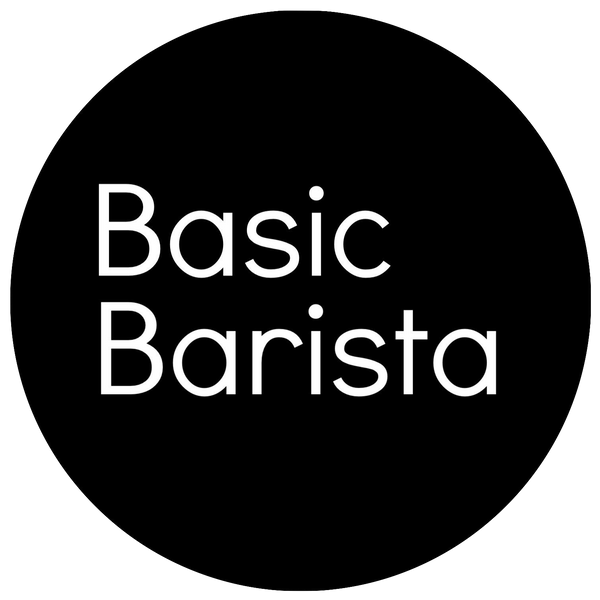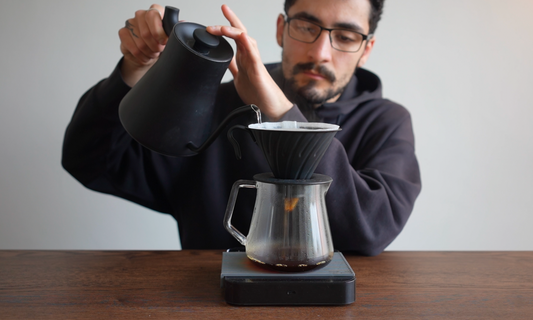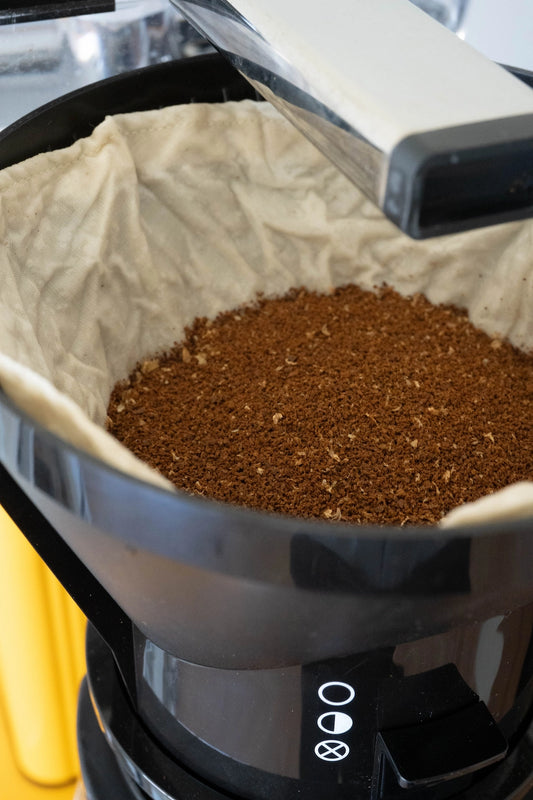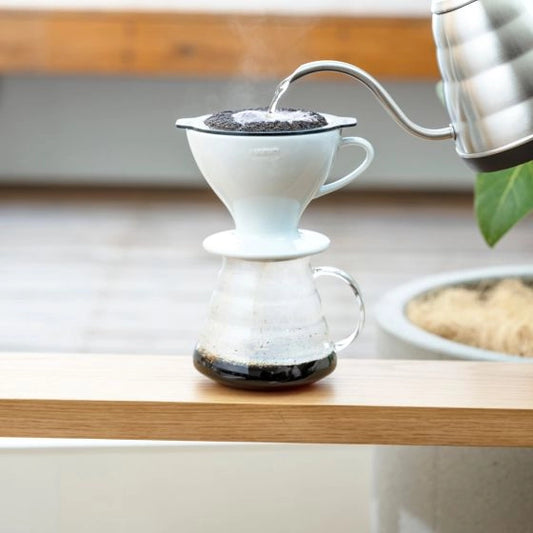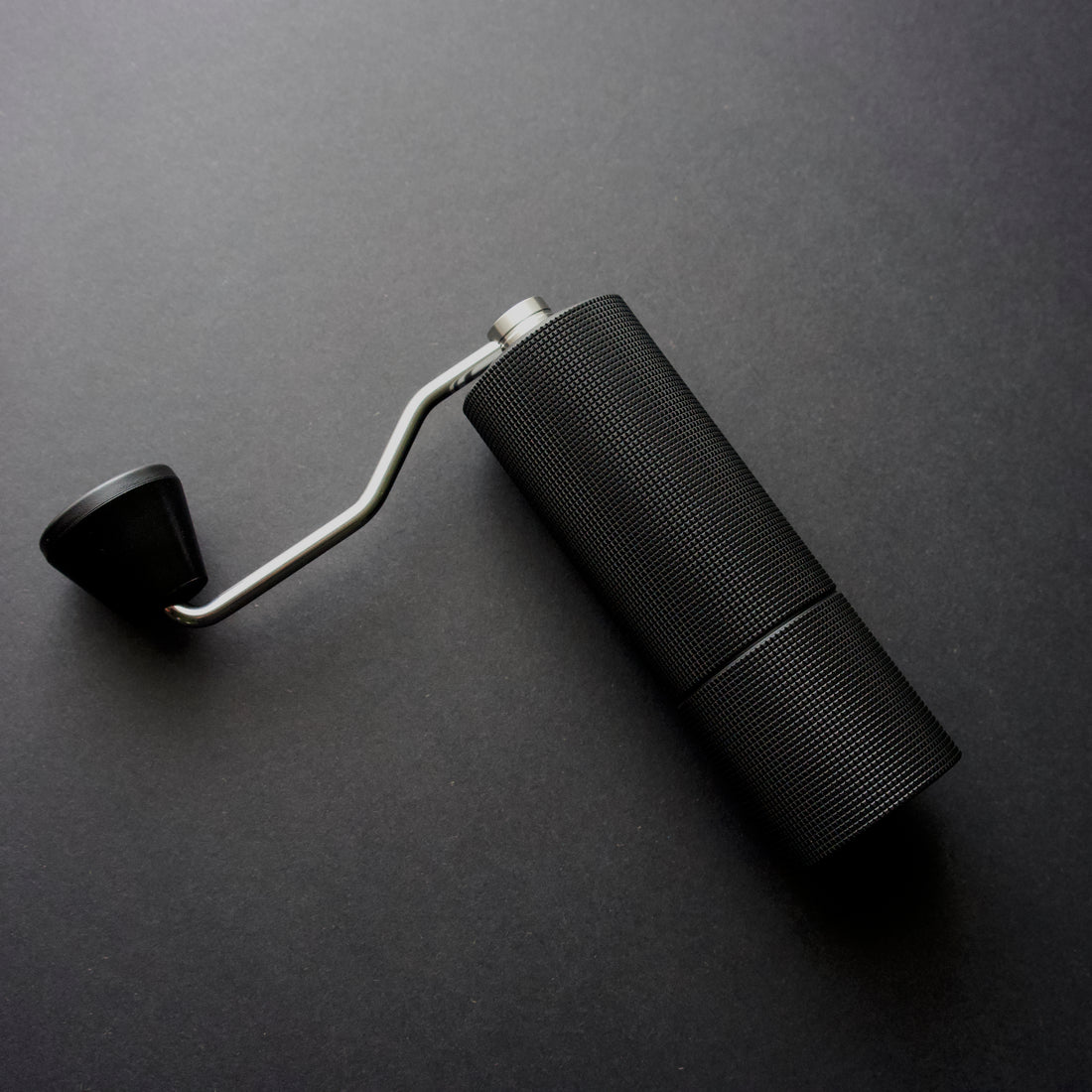
Timemore Chestnut C3 Hand Grinder Review
Share this article
Coffee grinders make a big difference in how good your coffee tastes. But with so many options out there, it can be tough to figure out which one to choose. If you want a no-nonsense grinder that's popular with coffee fans and experts alike, the Timemore C3 is a great choice.
In this article, I'll be sharing my thoughts on the Timemore C3 grinder, its features, and why it's a coffee grinder worth considering for any basic barista. Let's dive in!
Timemore C3 Features
The Timemore Chestnut C3 Hand Grinder is a compact, portable, and easy-to-use manual coffee grinder that's designed to deliver consistent grinds every time. It's equipped with the new upgraded S2C burrs, which are slower but are said to produce a more uniform grind size distribution. This means that the grinds are more even, resulting in a better-tasting cup of coffee. S2C refers to 'Spike To Cut' and can be seen at the top of the conical burr set as Vertical edges, these edges as the name suggests spikes the coffee beans first and breaks the coffee down into larger pieces before feeding them into the more traditional horizontal edges.
The Timemore C3 grinder also features a sleek design with a stainless steel textured body, dual bearings, and sharp stainless steel hardened burrs making it both durable, sleek looking and very practical. It's lightweight and can pack down by removing the handle and easily fits into a bag or backpack, making it a great option for travel.
The quality of grounds that this grind can produce is quite high and for an entry level grinder has impressed us quite a bit.
Hand grinders vs Electric coffee grinders
When grinding coffee on a hand grinder you almost always have to put in some effort, when grinding for pour over coffee and coarsish grind sizes this is manageable however when it comes to grinding espresso grind sizes or finer it may be worth looking into an electric grinder or you will be up for an arm work out.
Another consideration when weighing up electric vs hand grinders is that electric grinders are almost always going to be more expensive than hand grinders that produce a similar grind quality and this is because of the added costs associated with a motor and electrical certifications, these aren't an issue when looking at hand grinders.
Differences between the Timemore C2 vs C3 grinder models
The Timemore Chestnut C3 is the latest edition of the Timemore Chestnut grinders. There are a couple of differences with these grinders however the main upgrade is the S2C burr set. This stands for Spike To Cut and we will talk more about this burr set design later on in our article.
Another difference is the colour. The Timemore C3 Grinder is a much darker black colour compared to the more greyish colour found on the Timemore C2 Grinder.
Why grinding fresh matters
Grinding your coffee beans just before brewing is essential for achieving a better-tasting cup of coffee. When coffee beans are ground, they begin to oxidise, which starts to degrade the flavour and aroma of the coffee this results in a stale and much less vibrant taste to your coffee. By grinding fresh right before you brew, you're able to experience your coffee's flavour and aroma at its prime.
New S2C Burrs (Spike 2 Cut)
The Timemore C3 grinder comes with the new S2C burrs, which are slower but produce a more uniform grind size distribution. The slower speed allows for a more consistent grind, resulting in better extraction and a better-tasting cup of coffee.
These burrs did have a lot of hype around their release however there was an equal amount of people who weren't impressed with the speed in that these burrs ground at.
Why it’s important to adjust your grind size
Adjusting your grind size is essential for achieving the perfect extraction when brewing coffee. The grind size determines how fast the water passes through the coffee bed, and a finer or coarser grind can affect the flavour and strength of your coffee.
When grinding pour over on the Timemore C3 grinder I found that the 'range' (from 1 click grind position to the second click) to be enough to be able to dial in your coffee.
When grinding espresso on the Timemore C3 grinder I found that the 'range' was ok but wasn't great, I really like to have a lot more options and positions on a stepped grinder to get my coffee tasting perfect.
What grind size can the Timemore C3 coffee grinder produce?
The Timemore C3 can produce a range of grind sizes, from fine to coarse, making it versatile for different brewing methods. It's perfect for pour over, French press, and even espresso but for the reasons I stated before while you technically can grind for espresso on the Timemore C3 grinder it may not be your best option.
Is the Timemore C3 grinder worth it?
The Timemore C3 Hand Grinder is definitely worth considering, especially for those on a budget. It offers excellent value for money with its consistent grinds, ergonomic design, and portability. It's also easy to clean and maintain, making it a hassle-free option for any basic barista.
If you are looking for a hand grinder that can get your pour over tasting better with full grind size adjustment this is the grinder you are looking for.
If you're looking for a budget-friendly hand grinder that doesn't compromise on quality, the Timemore C3 is a great option. It offers excellent value for money with its consistent grinds, ergonomic design, and durability.

What grind size should I use for pour over?
I recommend starting off at 25 clicks on the Timemore C3, this grind size will vary depending on the coffee your are brewing, the roast, the brew method, filters and dripper you are using so this number may not work for everyone but it is a good starting point.
What grind size should I use for Espresso?
I recommend starting off at 10 clicks on the Timemore C3, this grind size will vary depending on the coffee your are brewing, the roast and the recipe you are using so this number may not work for everyone but it is a good starting point.
How to dial in your pour over coffee
When you make coffee, it is very rare to get all the variables right on the first go. Because of this we brew, taste and then make adjustments to these variables to make our coffee taste better than the previous brew.
To dial in pour over coffee, you'll need to adjust the grind size, coffee dose, and water temperature.
Start with the recommended medium-fine grind size and adjust accordingly to achieve the desired taste. If the coffee tastes sour, try using a finer grind size, increasing the coffee amount, or raising the water temperature. If the coffee tastes bitter, try using a coarser grind size, reducing the coffee amount, or lowering the water temperature.
Unfortunately there is no way around this, however dialling in pour over compared to an espresso is much less wasteful as it is much easier to make a bad tasting espresso compared to a bad tasting pour over coffee.
